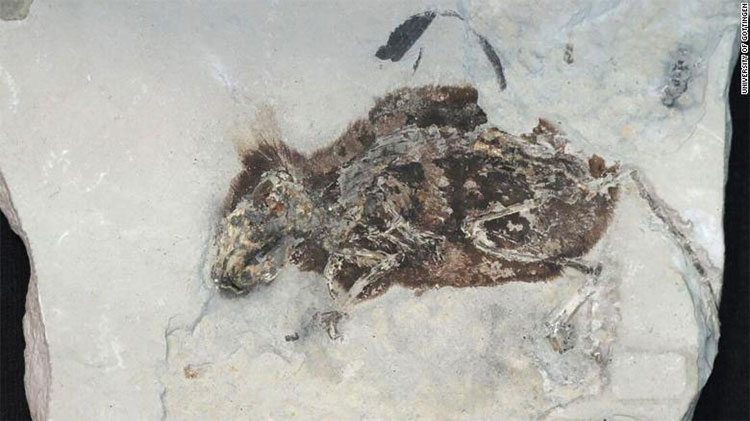Germany: Detecting 3 million-year-old fossil remains red
Millions of years ago, a small mouse with red fur and white belly, once lived in what is today the German village called Willershausen.
According to CNN, researchers have recently discovered the intact fossil of the now extinct mouse, also known as the 'extraordinary mouse'.

The 3 million year old mouse fossil remains intact.
This is the first time researchers have discovered red pigment in the fossils of ancient biological fossils, according to a new study published May 21.
Color is a way for scientists to see how organisms have changed to survive and color also plays an important role in evolution.
'What surprised us was that the body remains intact, from the skeleton to the outer skin. The head, legs and tail are clearly seen, 'said Uwe Bergmann, co-author of the study.
'X-ray images show that not only the bone structure of the object is intact, but the biochemical component is still preserved. This is really a surprise '.
According to the research team, finding red fossil fossils is not easy. Light pigments tend to fade over time and are not easy to find the original color.
'The problem is not only that this mouse has a red pigment, but also that we identified red in a 3 million-year-old fossil , ' Bergmann said.
The team expects new discoveries to help clarify the evolution of animals and the surrounding mysteries. It can also reveal how climate changes over millions of years.
- Fossils of 'giant' shrews of nearly 1 million years old are found in Spain
- Detection of giant mouse fossils
- Marvel at the remains of strange creatures with human legs and gibbon arms
- The 125 million-year fossil remains intact, the hair of prehistoric mice
- Detecting fossil creatures with 700 million year old spines
- Fetal intact in fossil horses 48 million years
- 200 million year long sea fossil remains intact
- Discover the most 'perfect' dinosaur fossil
- Opening the 1,000-year-old coffin, containing the missionary remains from the 11th century
- Detecting ancient human remains 1.8 million years in Indonesia
- 7-year-old baby 'excavated' was fossil 65 million years
- Mysterious remains of women belong to another human species
- The boy took two years to restore the 200 million-year-old dragonhead fossil
- Detecting common ancestor fossils of humans and modern primates
 'Fine laughs' - Scary and painful torture in ancient times
'Fine laughs' - Scary and painful torture in ancient times The sequence of numbers 142857 of the Egyptian pyramids is known as the strangest number in the world - Why?
The sequence of numbers 142857 of the Egyptian pyramids is known as the strangest number in the world - Why? History of the iron
History of the iron What is alum?
What is alum?